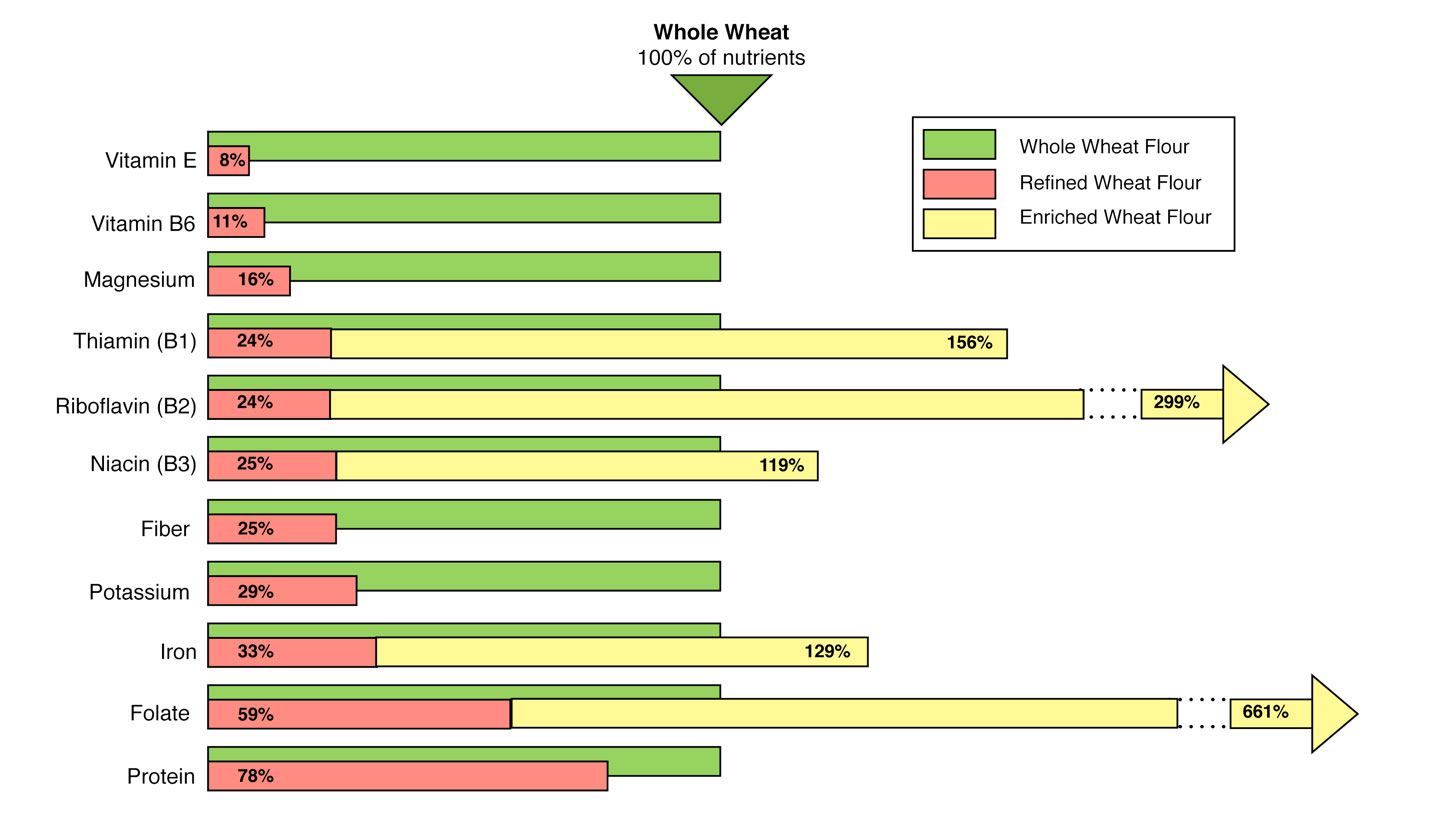Grains
You may have heard of “whole grains” and know that they offer beneficial nutrients to our diets, but what really is a whole grain? A whole grain is the entire seed, or kernel, of a plant. It is made up of three parts, the bran, the germ, and the endosperm. The bran is the outer skin of the kernel. The germ is the embryo of the kernel, the part that can grow into a new plant. The endosperm is the largest part of the kernel and supplies the food to the plant. When we buy or eat whole grains, we are getting the grain in its natural state and all the nutrients that come with it.
Refined vs Whole Grain
The difference between a refined grain and a whole grain is simple. A refined grain has been processed to remove both the bran and the germ from the kernel, leaving just the endosperm part of the grain. When the bran and germ are removed, there is a depletion of nutrients that the bran and the germ supply. To offset this nutrient depletion, food companies will “enrich” these refined grains by adding back missing nutrients such as B vitamins thiamin, riboflavin, and niacin as well as iron and folate. However, these are only a few of the nutrients that are robbed during the refining process. These enriched grains still lack vitamins and nutrients including vitamin E, magnesium, fiber, potassium, and protein. It is for this reason that the best solution to optimizing the nutrients available in grains is to eat them in their whole grain form.
Identifying Whole Grain
Examples of whole grains include wheat, corn, rice, oats, barley, and quinoa. When identifying whether a product is in fact whole grain, it is important to read ingredient labels. Words like “whole grain”, “whole wheat”, “brown rice”, and “oats” mean that you’re getting all parts of the grain. In contrast, words like “enriched flour”, “wheat flower”, “bran”, “wheat germ”, and “multigrain” mean that these foods do not predominantly contain whole grains. One way to add these whole grains into your diet is to substitute whole grain alternatives to recipes such as switching half of the white flour in a recipe to whole wheat flour or replacing a third of flour with oats. Making these easy substitutions can add whole grains to foods which you already enjoy.
There are some great health benefits that accompany replacing refined grains with whole grains. Whole grains are a valuable source of antioxidants, B vitamins, vitamin E, magnesium, iron, and fiber. This can improve total cholesterol levels, lower LDL cholesterol, blood sugar control, and inflammatory factors in our body. These health benefits are associated with a decreased risk of chronic diseases such as heart disease, stroke, type II diabetes, and colorectal cancer.

If you need help maintaining a healthy diet and losing weight, call us Call us at (952) 209-7447 or schedule an appointment online!




